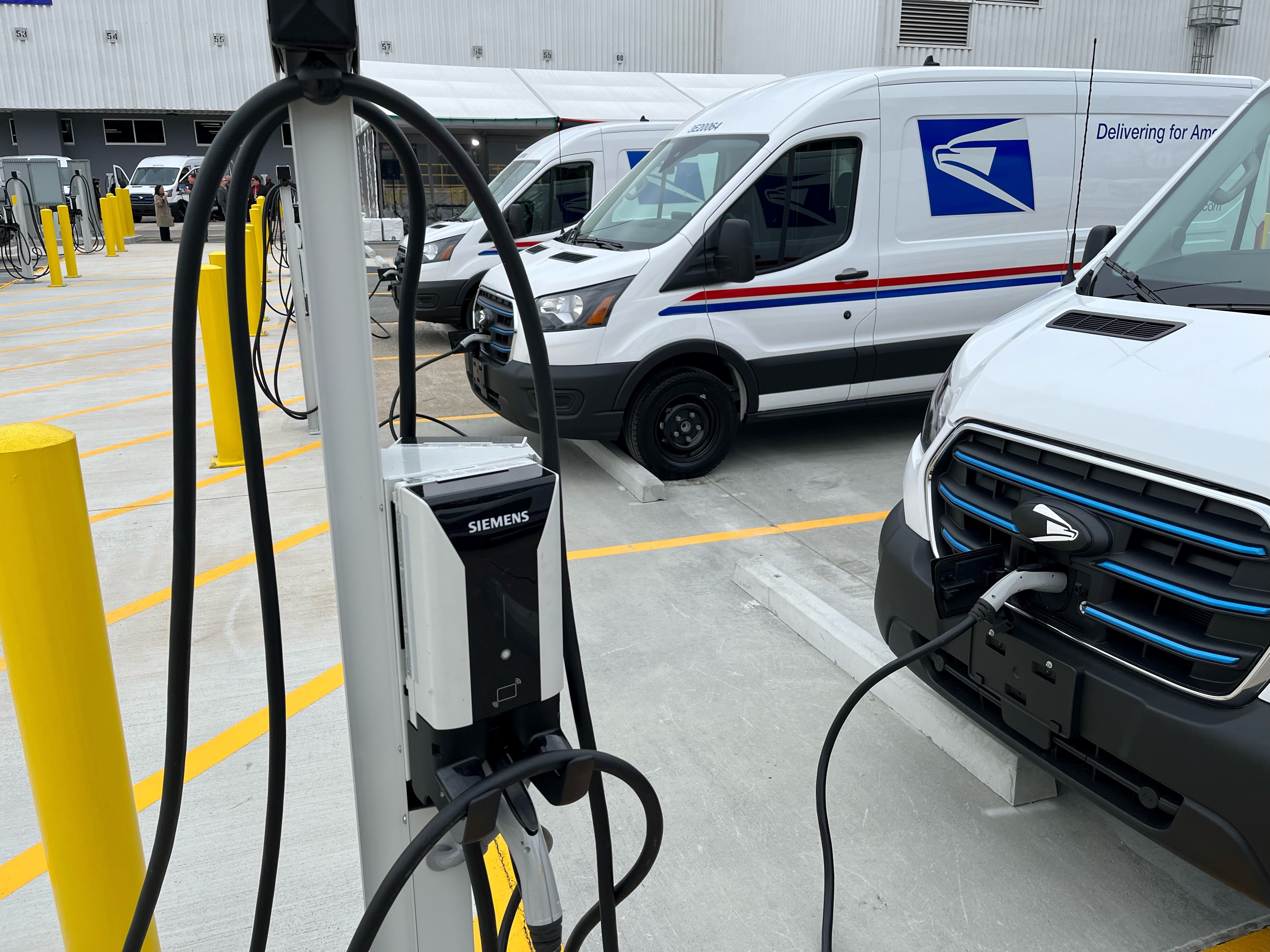The Future Is Here
Michael O. Foster
March 19, 2024
Many postal workers and patrons in years gone by remember the quarter-ton jeeps, the two-ton trucks, and the long-life vehicles (LLV’s) that outlived their life expectancy by over 20 years. Customers could tell when their mail was being delivered by the distinctive “putt-putt” sound made by these types of gas-powered engines, some with speeds that wouldn’t allow for travel on freeways.
For many years, skilled Vehicle Maintenance Facility (VMF) employees have diligently maintained the postal fleet. At times, the ingenuity of these employees was what kept the fleet going. “Robbing Peter to pay Paul” types of repairs, taking parts off one vehicle or making parts in the shop just to ensure that there were enough vehicles to “make the dispatch.” As the nation grew, more addresses were created, and mail volume increased, so did the need for postal vehicles. Many more trucks were leased, drive out contracts that paid carriers to use their personal vehicles were used, but it still wasn’t enough. This self-sufficient government agency still needed congressional assistance to meet the demands of the country.
By this time America had serious concerns about the environment, global warming, and saving the planet for future generations. For the USPS to secure federal funds for vehicle purchases, there had to be a commitment for eco-friendly energy-saving vehicles.
NGDV and Ford E-Transit
 The Postal Service has an expectation to purchase at least 66,000 Next Generation Delivery Vehicles (NGDVs) in the battery/electric variant (BEV).
The Postal Service has an expectation to purchase at least 66,000 Next Generation Delivery Vehicles (NGDVs) in the battery/electric variant (BEV).
There are positives and negatives to having a fleet of electric vehicles. Each Post Office and VMF that will have a NGDV BEV vehicle must also have a corresponding number of charging stations; the greater the number of battery/electric vehicles, the greater the stress on the electrical grid. Charging stations take up space and can affect parking. There are fewer moving parts in a battery/electric vehicle which creates a reduction in maintenance requirements in the NGDV BEV, in comparison to a conventional gasoline-powered vehicle. The Postal Service mailbox-to-mailbox type of delivery won’t fully utilize the vehicle’s ability to put electricity back in the battery while braking. NGDC BEV emits no pollution and almost no noise.
Recently, the USPS along with White House officials held an EV and Charging Infrastructure launch at the South Atlanta Sorting and Distribution Center to roll out the Ford E-Transit battery/electric vehicle as part of the fleet.
On Jan. 9, 2024, APWU representatives Garrett Langley, Michael Mize, Albert Lewis, and William Drew participated in First Article Testing for the Ford E-Transit vehicle at the Michigan Proving Grounds in Romeo, MI. The group evaluated the interior, exterior, and driving characteristics with safety and functionality in mind. The Ford E-Transit is a battery electric commercial off the shelf (COTS) lefthand-drive vehicle. The Postal Service purchased approximately 9,500 of these full-size vans that have an eight-hour charge time with an approximate range of 200 miles and should primarily be used on park and loop routes where box to box delivery isn’t required. The Ford E-Transit is marketed as an eco-friendly alternative to gas engine vehicles with less maintenance costs. The APWU representatives noted several issues during First Article Testing and notified the Postal Service in writing of our findings. A few notable concerns include the large center touch screen that could be a distraction, a sidestep that could become slippery in inclement weather, and a bulkhead door latch that could be a pinch hazard. ■



